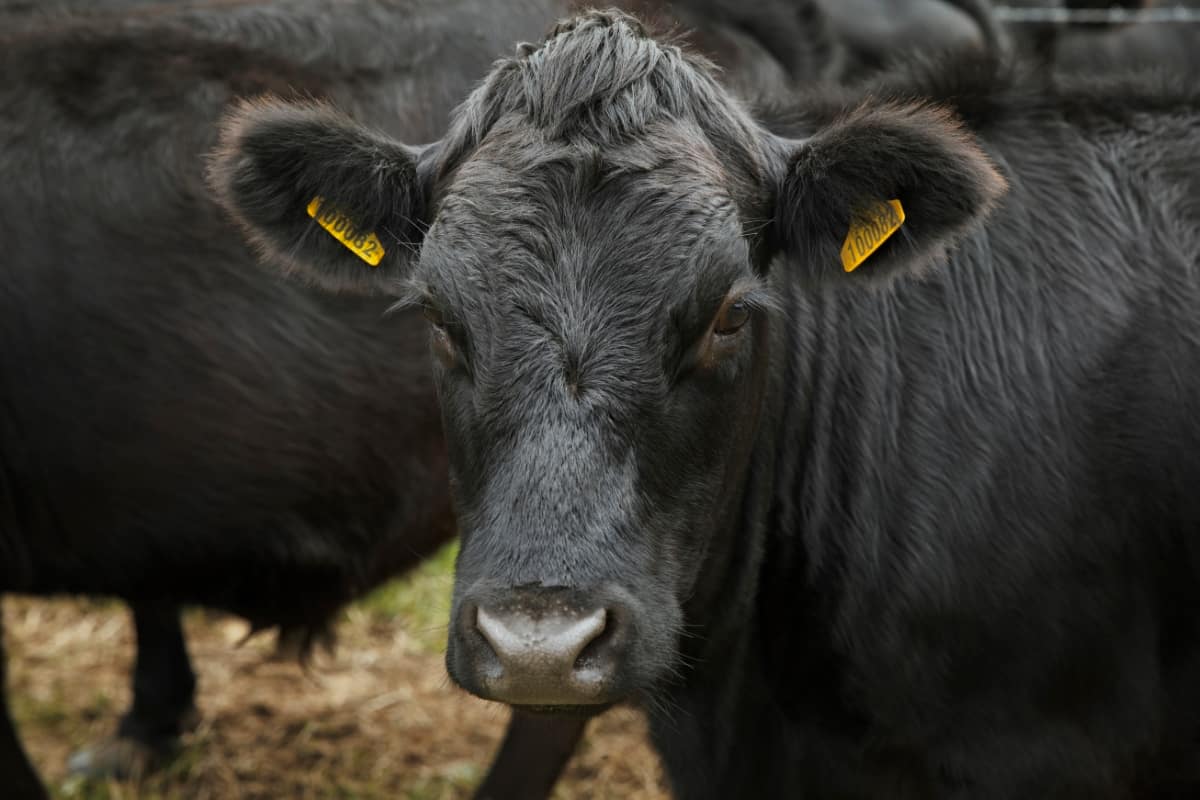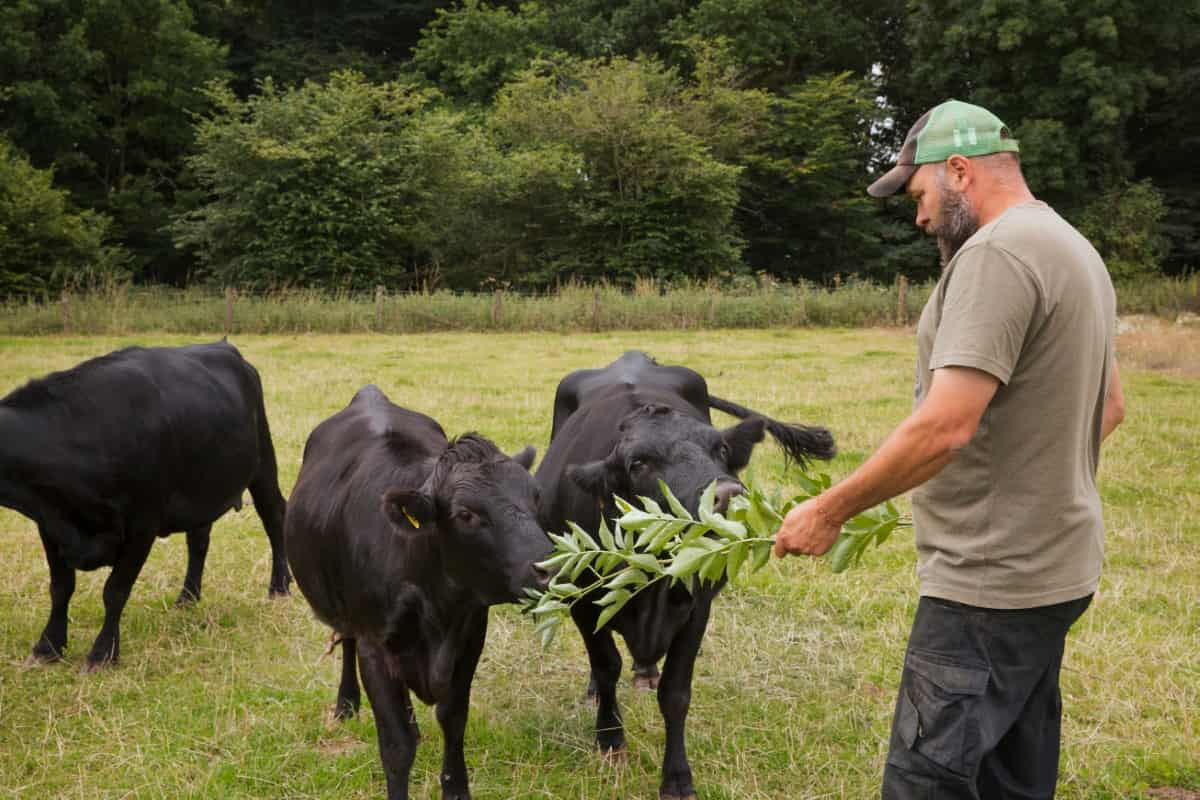Dexters are dual-purpose animals, excelling both in milk production and beef quality. The key reason for choosing Dexters is their hardy and versatile nature. Their adaptability allows them to thrive in various climates and landscapes. Whether you are a small-scale farmer or a homesteader, Dexter cattle can be an excellent choice for your farm.

All You Need to Know About Dexter Cattle Farming
Getting Started with Dexter Cattle Farming: A Beginner’s Guide
Firstly, it is important to understand why raising Dexter cattle can be a great choice for beginners. These adorable creatures are known for their hardiness and versatility, making them an ideal option for small-scale farms and homesteading situations. Dexter cattle are not only visually appealing with their distinctive appearance but also offer numerous benefits in both milk and beef production.
Weighing an average of 300-350 kg and standing at 92 cm – 107 cm tall at the shoulder, Dexters are considered a dual-purpose breed. When starting your own Dexter herd, it’s crucial to consider breeding techniques that will improve your herd quality over time. By focusing on desirable traits such as good conformation, temperament, and milking ability when choosing breeding stock, you can gradually enhance the overall quality of your herd.
The History and Origin of Dexter Cattle: Understanding the Breed
Understanding the history and origin of Dexter cattle is crucial to appreciate this remarkable breed fully. With a rich background rooted in Ireland, these small but hardy animals have come a long way to become an integral part of sustainable farming practices today.
The Dexter breed originated in the South Western region of Ireland and was traditionally kept by small landholders. They were known as the “poor man’s cow” due to their small size and versatility. Descended from the predominantly black cattle of early Celts, Dexters share their lineage with the Kerry breed.
Advantages of Dexter Cattle in Sustainable Agriculture Practices
Efficient land use: Due to their compact size, Dexters require less pasture space compared to larger breeds. This means that you can raise more animals on the same amount of land, maximizing your resources and minimizing environmental impact.
Grazing management: Dexters excel at grazing efficiently on diverse vegetation types, including rough terrain and brushy areas that are challenging for machinery or other livestock breeds. Their ability to thrive on natural forage reduces the need for supplemental feed and minimizes reliance on fossil fuels.
Low-input breed: Dexters are known for their resilience and adaptability in various climates and environments, requiring minimal inputs such as feed supplements or medications. This makes them cost-effective to raise while maintaining a focus on sustainability.
Dual-purpose capability: While smaller in size, Dexter cattle still provide ample quantities of milk with high butterfat content suitable for cheese-making or personal consumption needs.
Dexter Cattle Breeding Techniques: Improving Herd Quality
Breeding plays a major role in improving the quality of Dexter cattle herds. By carefully selecting and pairing animals based on desired traits, breeders can work towards producing offspring that meet specific goals. One key factor to consider is Dexter’s cattle genetics. To improve the herd, breeders need to have a good understanding of genetics and how certain traits are passed down from one generation to the next.
Reproduction also plays a vital role in improving herd quality. Breeders should aim for healthy cows with good reproductive capabilities. Regular veterinary check-ups, proper nutrition, and appropriate breeding techniques all contribute to successful reproduction.
Dexter Cattle Grazing Management: Best Practices for Pasture Health
These small but hardy animals require specific attention to ensure they have access to nutritious forage while also preserving the quality of the land they graze on. The main aspect of Dexter cattle pasture management is rotational grazing. By dividing your pasture into smaller paddocks and rotating the cattle through them, you can prevent overgrazing and allow grass to recover. This not only ensures a consistent food source for your Dexters but also promotes healthier soil and reduces the risk of erosion.
In case you missed it: American Brahman Cattle: Origin, Uses, Height, Weight, Size, Characteristics, Lifespan, and Price

Feeding is another crucial consideration in Dexter cattle grazing. While these animals are known for their ability to thrive on rougher vegetation, it’s important to supplement their diet with high-quality hay or grain during periods of limited grazing or harsh weather conditions. Balancing their nutritional needs will keep them strong and resilient. In terms of land use, it’s beneficial to implement a sustainable approach that maximizes efficiency while minimizing environmental impact.
Dexter Cattle as Dual-Purpose Animals: Exploring Meat and Milk Production
When it comes to meat production, Dexter cattle offer tender and flavorful beef that is highly sought after by consumers who appreciate the superior taste and texture. Dexters have well-developed muscling, which contributes to the excellent marbling and flavor of their beef. On the other hand, Dexter cattle also produce high-quality milk. This makes it ideal for cheese-making and other dairy products.
With an average daily milk yield of Dexter of about 10-12 liters per cow during lactation, Dexters can meet the needs of both small-scale dairy operations and individuals seeking fresh milk for personal consumption. By raising dual-purpose Dexter cattle, farmers can tap into multiple revenue streams while minimizing input costs. Whether it’s selling premium beef cuts or offering farm-fresh dairy products like cheese or yogurt, there’s no shortage of possibilities when it comes to marketing Dexter cattle products.
Health Care and Disease Prevention in Dexter Cattle
These hardy and versatile animals may be small in size, but they still require proper care and attention to stay healthy. The main aspect of maintaining the health of your Dexter cattle is providing them with regular veterinary care. Regular check-ups, vaccinations, and deworming treatments are essential for disease prevention. In addition to regular veterinary care, implementing good management practices is crucial for keeping your Dexters healthy.
This includes providing them with nutritious feed that meets their dietary requirements, as well as access to clean water at all times. Proper shelter should also be provided to protect them from extreme weather conditions. Closely monitoring your Dexter cattle for any signs of illness or discomfort is another important aspect of disease prevention. Early detection can often prevent more serious issues from arising. Implementing biosecurity measures on your farm is also important for preventing diseases among your Dexter herd.
Economic Aspects of Dexter Cattle Farming: Cost-Benefit Analysis
Understanding the cost-benefit analysis can help farmers make informed decisions and maximize their profitability. Dexter cattle are known for their small size, which means they require less feed compared to larger breeds. This can result in lower feeding costs and ultimately contribute to higher profits. Another economic advantage of Dexter cattle farming is their versatility as dual-purpose animals. Farmers can capitalize on both milk and meat production from a single animal, providing multiple income streams.
The milk yield of Dexters may not match that of specialized dairy breeds but can still be substantial for small-scale operations. However, it’s important for farmers considering Dexter cattle farming to evaluate the initial investment required carefully. While Dexters are generally more affordable than other breeds, there are still expenses associated with purchasing quality breeding stock and establishing suitable infrastructure.
Winter Care Tips for Dexter Cattle: Ensuring Herd Well-being
Provide a sturdy and well-insulated shelter that protects your Dexters from harsh winds and extreme cold temperatures. Make sure there is enough space for them to move around comfortably. Adequate bedding is key. Lay down plenty of clean straw or wood shavings in their shelter to provide insulation and warmth.
It’s crucial to regularly check their water sources and ensure they have access to fresh, unfrozen water at all times. Consider investing in heated water troughs or using insulated buckets. During winter, Dexters may need additional calories to maintain body heat, so adjust their feed accordingly with high-quality hay or silage supplements.
Marketing Strategies for Dexter Cattle Products: Meat and Milk
The important aspect of marketing Dexter cattle is understanding the target audience. This involves identifying who would be interested in purchasing these products and tailoring marketing efforts towards them. For example, promote high-quality, grass-fed beef from Dexter cattle to health-conscious consumers who value sustainable farming practices.
Another strategy is to focus on building a strong brand for the Dexter cattle products. This can be achieved through effective branding techniques such as creating a unique logo and packaging design that reflects the values and qualities of the product. In terms of selling Dexter cattle products, partnering with local markets or specialty grocery stores can provide an avenue for direct sales to consumers seeking locally sourced goods.
In case you missed it: Limousin Cattle Breed: Origin, Characteristics, Temperament, Pros and Cons

Conclusion
Raising Dexter Cattle comes with a multitude of benefits for small-scale farms and homesteaders. These compact yet hardy animals are known for their versatility, making them an ideal choice for those looking to maximize their resources. They are known for being resilient and adaptable to various farming conditions.
- Feed Your Flock for Less: Top 10 Tips to Save on Chicken Feed
- Ultimate Guide to Ossabaw Island Hog: Breeding, Raising, Diet, and Care
- Hatching Answers: The Top 10 Reasons Your Chickens Aren’t Laying Eggs
- Eggs and Economics: Breaking Down the Cost of Raising Backyard Chickens
- Defend Your Greens: Proven Methods to Keep Iguanas Out of Your Garden
- Ultimate Guide to Cinnamon Queen Chicken: A Comprehensive Guide for Beginners
- Ultimate Guide to California Tan Chicken: Breeding, Raising, Diet, Egg-Production and Care
- Ultimate Guide to Marsh Daisy Chicken: Breeding, Raising, Diet, and Care
- 10 Types of Chicken Farming Businesses You Can Start for Profits